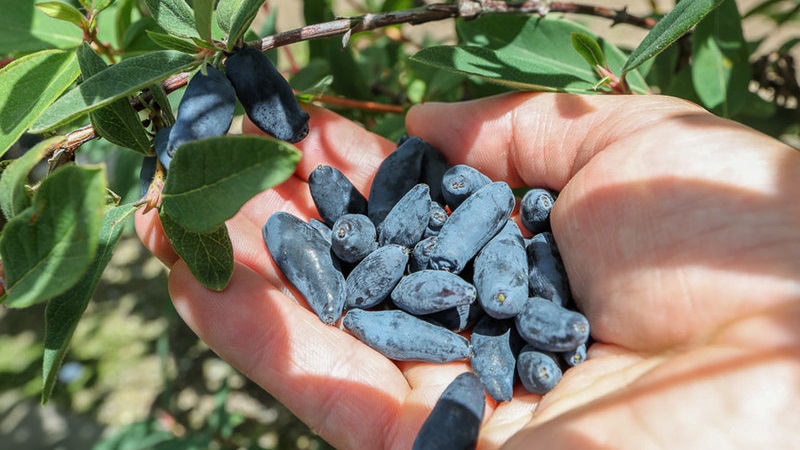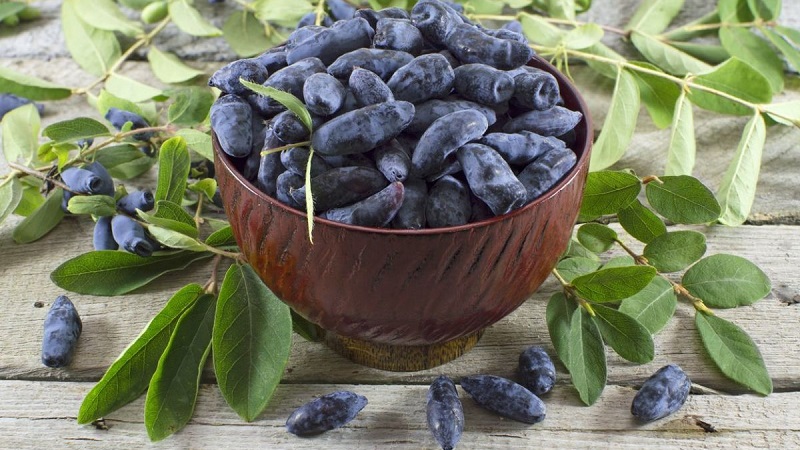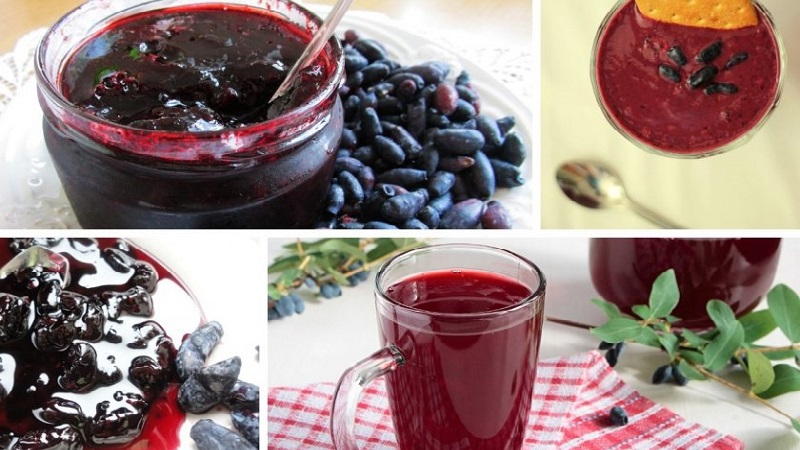When to harvest honeysuckle, how best to sort and process it
Honeysuckle is a very tasty and healthy berry, rich in vitamins and microelements. At first glance, it may seem that harvesting is a long and arduous process, but this is not the case if you know simple methods and tricks. How to quickly collect honeysuckle from a bush, we will tell in the article.
The content of the article
When to harvest honeysuckle
Honeysuckle ripens in June - a week earlier than strawberries... Wherein:
- in the European part of Russia, the harvest time for early-ripening varieties is June 12-19, mid-ripening - 20-27, late-ripening - after June 28;
- in the Urals, the honeysuckle harvesting season is mid-June, sometimes late May - early autumn;
- in Siberia, early ripening varieties, such as Viola, bear fruit in early summer.
Coloring the berries blue does not yet indicate ripeness, you need to wait 5-7 days... During this time, the fruits will increase, the taste and smell will improve, the pulp will become more tender. Honeysuckle is harvested when at least 75% of the berries are ripe.
Fruits ripen gradually, unevenly, this is especially noticeable in rainy and cold years. Then the collection is carried out in 2 steps. In warm years, the berries ripen almost simultaneously.

Honeysuckle harvesting process
The main disadvantage of honeysuckle is the high crumbling of ripe fruits. Many new varieties have now been developed, most of which have berries attached to the stalk with medium strength. When harvesting, losses due to shedding are no more than 3-5%.
There are varieties that do not crumble at all: Amphora, Roxana, Kamchadalka, Dessertnaya, Morena, Violet.
Harvesting honeysuckle correctly
You can pick the berries by hand. It is better to do this not immediately, but in several approaches.: the ripest and largest at first, then the smallest when ripe just as well.
How to harvest honeysuckle quickly and easily
An alternative to manual collection is shaking off... The method is suitable for varieties with high crumbling. For this, a black film is spread under the bush. They do this until they are fully ripe, so that the berries, which themselves began to crumble, do not get dirty, and they can also be picked.
Important! Use a black film so that the blue fruits are not visible to birds, which can peck on the crop.
To collect, you need to gently shake the bush... The berries fall onto the film, then they are poured into a container.
Also instead of film, use a sheet, burlap, an inverted umbrella... Some people really like the latter method, it is widely used for harvesting honeysuckle on a small scale. The principle is the same: place an inverted umbrella under a bush and shake the branches.
How to quickly sort out honeysuckle
After picking berries by shaking them off the bush, we get a crop contaminated with all kinds of debris - leaves, branches.
It is very difficult to remove all this manually, therefore we offer 2 simple options on how to quickly sort out honeysuckle.
Method one - hair dryer
Pour the berries into a large tray with sides so that they do not roll, and blow off with a hairdryer... Shake the tray slightly. All debris will be blown away by the air stream.
Method two - inclined surface
This the method is widely used in mass collection:
- Find a long inclined surface (for example, a board), with the lower part resting on the floor.
- Spread the film.
- Cover the inclined surface with a wet sheet.
- Pour berries onto an inclined surface.
- The fruit will roll and the debris will linger on the sheet.

How to cook and consume crops
Honeysuckle has many beneficial properties, it contains magnesium, potassium, iodine, iron, as well as vitamins A, C, group B. That is why I want to save all this for the winter. Let's consider the most common methods.
Attention! Among the varieties of honeysuckle, there are decorative. They must not be eaten.
Jam
Jam recipe without water:
- We take berries without stalks, cover with sugar 1: 1.
- Leave for 4-5 hours until the juice is released.
- Set on fire, bring to a boil, cook for 5 minutes, stirring constantly.
- Remove from heat, wait 8 hours for the berries to absorb the syrup.
- Cook for 15 minutes, stirring constantly, remove the foam.
- Pour into dry, pre-sterilized jars, roll up with sterile lids.
Juice
Preparation:
- We take ripe berries, grind with a blender, meat grinder, crush. We use enameled dishes.
- Add water - 1 glass per 1 kg of berries.
- Heat the fruits to + 65 ° C, stirring continuously. We leave for 30 minutes.
- We get the juice using a juicer or manually through the fabric.
- Boil for 3-4 minutes, pour into jars, cover with lids. Next, we pasteurize the cans: half-liter - 10 minutes, liter - 15 minutes.
- If desired, add sugar - 100 g per 1 liter.
Canned compote for the winter
Preparation:
- We make syrup: 300-350 g of sugar per 1 liter of water.
- As soon as the liquid boils, add 1/3 tbsp. berries.
- Boil for up to 2 minutes, remove from heat.
- We insist 10 minutes.
When making honeysuckle compote, you can use other berries or fruits, such as apples.
There is an original recipe with the addition of rhubarb, which has a sour taste.:
- Cooking syrup from 1 liter of water and 3 tbsp. l. Sahara.
- After boiling, put the honeysuckle berries and rhubarb stalks, cut into small pieces.
- Cook for 5-7 minutes.
- We filter and cool.

Varietiesthat can be eaten fresh and canned:
- Vasyugan;
- Tomichka;
- Pavlovskaya;
- Blue spindle;
- Blue bird;
- Chelyabinka;
- Long-fruited.
Conclusion
To save energy when harvesting honeysuckle, improvised means, for example, an umbrella or a hair dryer, will allow. It is also important to choose the right time: the berries are removed from the bush when at least 75% of the fruits are ripe.
Considering these factors, growing a crop will only bring joy from eating this tasty and healthy berry. There are many interesting recipes for preparations for the winter, which will enrich the body with useful substances in the cold season.